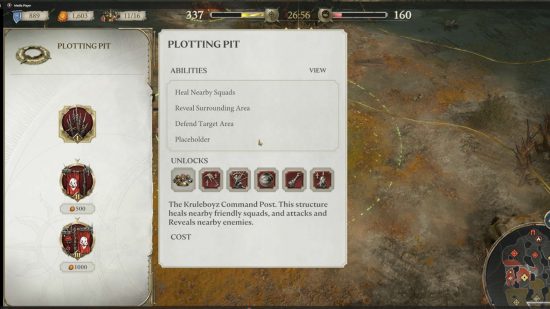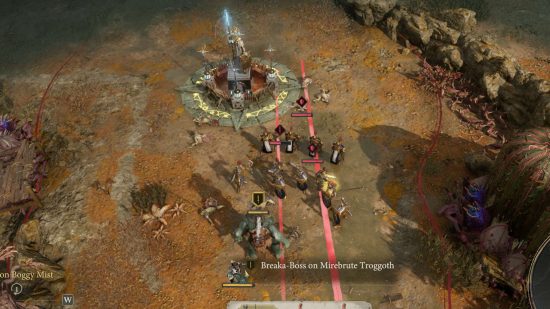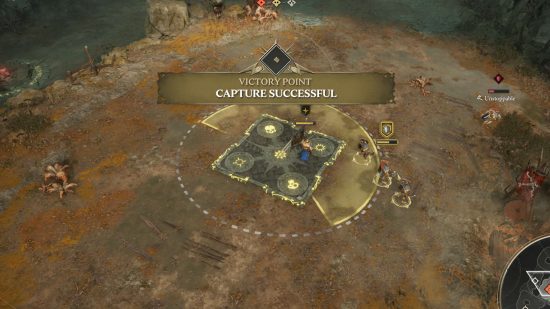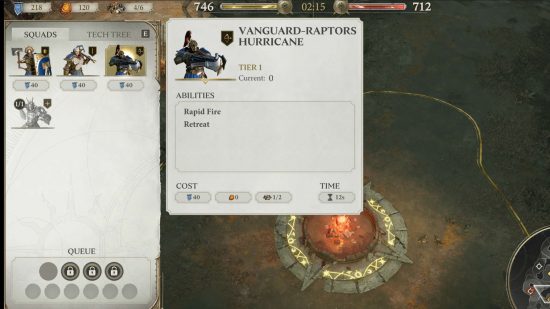Like an Orruk fortress in the Realm of Beasts, Age of Sigmar: Realms of Ruin is built on the bones of a long-dead behemoth. The beloved Warhammer 40k game series Dawn Of War may be five years dead, but my time at the Realms of Ruin preview showed me that its spirit lives on.
The game’s fundamentals are plain to see: Realms of Ruin is made in the mold of Dawn of War and Company of Heroes. As both series have entries on our list of the best RTS games, that’s good company to be in.
While there are many excellent Warhammer Fantasy videogames, most of them are set in the Warhammer Old World, familiar to fans of Total War: Warhammer III. Realms of Ruin takes place in the newer Age of Sigmar setting. In case you’re unfamiliar with the setting, I’ll run through the important details here:
The titular “Realms of Ruin” are the Mortal Realms, a collection of eight dimensions each themed around a concept like Death, Fire, or Shadow with all the subtlety of an Irish bar in New York. The main method of travelling between the Realms are portals called Realmgates. Until recently, most of the Realms were overrun by the forces of the Warhammer Chaos Gods.
That was until the Dwarven God of the Forge, Grungni, and the human God of Order and Lightning, Sigmar, teamed up to make some DIY angels from the souls of dead heroes and snazzy gold armor. The campaign narrative follows the Stormcast Eternals into the wilds of Ghur, Realm of Beasts, as they battle the cunning Orruk Kruleboyz.
The tutorial scenario gives a gentle introduction to controls, concepts, and several units. The quality of writing and facial animation in the intro cutscene was better than it needed to be. Promising, and enough to give me hope that the campaign itself will have a story worth following, but not really evidence either way as to the quality of the single-player campaign.
But multiplayer already feels great. You win matches by draining your opponent’s victory points bar to zero; you do that by holding more victory point locations on the map than they do. You can also capture Arcane Conduits which will provide you with Realmstone, used for tech tree upgrades and single-use abilities, and Command, used for recruiting units and building Bastions on top of Arcane Conduits.
There’s essentially no base building. Units teleport into the map via your Realm Gate which may seem video-gamey, but is actually pretty lore appropriate. Your starting camp can be upgraded to unlock new tiers of units and other upgrades, and you can slap down a selection of upgradable Bastions onto each Arcane conduit, including resource harvesters, turrets, vision extenders, and healing auras. That’s your lot.
That will put a lot of classic RTS players off, and I won’t throw shade at you if it does: turtling and base building are great fun, and games like Age of Empires are massively popular for good reason. But stripping these features right out freed up my brain’s limited processing power to engage with the tactical choices of where to commit my units, and strategic choices of which ones to build.

Combat uses a Rock-Paper-Scissors system, with ranged units beating light infantry, light infantry getting under the guard of heavy infantry, and heavy infantry walking through ranged attacks to bash ranged infantry to pieces. Monsters and heroes sit off to the side of this system. It’s a strategy game staple for a reason: it just works.
When units engage, they’re locked in place and fight to the death, only breaking away if you hit the retreat key. I loved this feature. Units retreat all the way back to your starting camp without you having to set their destination, letting you stay focused on the ongoing fight rather than nannying a wounded unit. Once back in base you have the option to activate the camp’s healing aura to get them fighting fit again.
Activating that healing aura costs you as much Command as summoning three basic infantry units, however. That invites really interesting decisions, particularly at the start of the game when you’re bumping up against the unit cap. Do you pay over the odds to heal one or two units and get them back into the fight faster than you could summon replacements, wait for another casualty to make the cost worth it, or send them off to die so you can respec your army?
Each unit starts with at least one activated ability: Kruleboyz Manskewer Boltboyz can activate stealth mode and set up an overwatch field with their crossbows, the Stormcast’s Knight Vexillor can project a healing aura, while the devious Hobgrot Slittaz can bury landmines. You can unlock more abilities for units via research, but I never found the amount of micro-management unmanageable.

Your capacity to use abilities is tempered by a cooldown and by a resource cost, either in the Command you need for reinforcements or the Realmstone you need for upgrades. The choice, between immediate power and long-term investment, is again interesting.
Matches were snappy, lasting about twenty minutes. It’s far too early to determine how balanced the forces are, internally or between one another, and that will be absolutely critical to the long term success of the game.
I played an early build of Realms of Ruin: elements of what I saw were placeholders, and I hit some bugs. A glitch with the minimap drove me around the bend until I gave up using it entirely, and my third match died in a crash. A spokesperson for Frontier says those have been fixed ahead of the Open Beta on July 7, and the Beta build has received “further polish”.
I play a lot of miniature wargames, so perhaps you won’t be surprised that I don’t mind the lack of base building. Realms of Ruin still offers strategic choices, and having a very simple interface to execute them let the tactical gameplay shine.
While I was at least half-serious when I said I recently built a $2k gaming PC to run a 2D strategy game from 2020, I did have Realms of Ruin in mind when I picked the graphics card.
The Realms of Ruin Open Beta runs from July 7-10 for PC and consoles. To find out if your PC can run Realms of Ruin, check with our friends at PCGamesBenchmark.
Source: Wargamer






